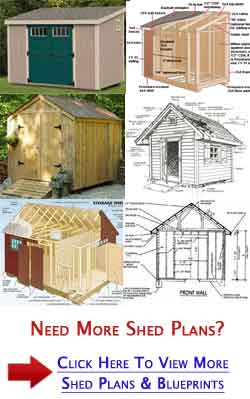

 monroesheddepot.com ```html
monroesheddepot.com ```html Introduction: Building a Simple DIY Storage Shed Are you tired of clutter in your garage or backyard? A DIY storage shed can be the perfect solution. This post will guide you through building a basic, functional shed step-by-step. While this guide provides general instructions, always check your local building codes and regulations before starting any construction project. Safety is paramount, so wear appropriate safety gear throughout the process.
Materials and Tools Needed: Before you begin, gather all the necessary materials and tools. This will save you time and frustration later.
- Lumber: Pressure-treated lumber for the foundation and framing lumber for the walls and roof. The amount needed will depend on the size of your shed.
- Plywood or OSB: For sheathing the walls and roof.
- Roofing materials: Asphalt shingles, metal roofing, or other roofing material of your choice.
- Fasteners: Nails, screws, and construction adhesive. Use exterior-grade fasteners for all connections.
- Door and hardware: A pre-hung door or materials to build your own. Hinges, handles, and a latch are also necessary.
- Windows (optional): If you want natural light, include windows in your design.
- Concrete blocks or gravel: For creating a level foundation.
- Tools:
- Measuring tape
- Level
- Square
- Circular saw
- Drill/driver
- Hammer
- Nail gun (optional)
- Safety glasses
- Work gloves
- Ladder
Step 1: Preparing the Foundation The foundation is crucial for a stable and long-lasting shed. Choose a level location for your shed. Remove any vegetation and debris. Create a gravel base or use concrete blocks to establish a level foundation. If using concrete blocks, space them evenly apart, ensuring they are level with each other. Build a pressure-treated lumber frame on top of the gravel or blocks. This frame will serve as the base for your shed walls. Make sure it's square and level. Secure the frame to the blocks or gravel with appropriate fasteners.
Step 2: Building the Walls Framing the walls correctly is essential for structural integrity. Cut the wall studs to the desired height. Standard shed walls are typically 8 feet tall, but you can adjust this based on your needs. Assemble the wall frames on the ground. Space the studs 16 inches on center. Attach the top and bottom plates to the studs using nails or screws. Raise the wall frames and secure them to the foundation frame. Use a level to ensure the walls are plumb (perfectly vertical) before securing them permanently. Brace the walls temporarily to keep them stable while you build the remaining walls. Repeat this process for all four walls.
Step 3: Framing the Roof The roof protects your shed from the elements. Determine the desired roof pitch. A simple gable roof is easiest for beginners. Cut the rafters according to your roof pitch and shed width. Attach the rafters to the top plates of the walls, ensuring they are evenly spaced. Install a ridge board along the peak of the roof to connect the rafters. Sheathe the roof with plywood or OSB, securing it to the rafters with nails or screws.
Step 4: Installing the Sheathing and Siding Sheathing provides a surface for attaching siding and adds structural strength. Cover the walls with plywood or OSB sheathing, securing it to the studs with nails or screws. Choose your desired siding material (wood, vinyl, metal) and install it according to the manufacturer's instructions. Overlap the siding properly to prevent water from entering the shed.
Step 5: Adding the Door and Windows (Optional) Access and light are important considerations. Install the door frame according to the manufacturer's instructions. Hang the door and install the hardware (hinges, handle, and latch). If you included windows, install them according to the manufacturer's instructions.
Step 6: Roofing A weatherproof roof is crucial. Install a roofing underlayment (tar paper or synthetic underlayment) over the roof sheathing. Install your chosen roofing material (asphalt shingles, metal roofing) according to the manufacturer's instructions. Overlap the roofing material properly to ensure a watertight seal.
Step 7: Finishing Touches Details make the difference. Add trim around the door, windows, and corners of the shed. Caulk any gaps or cracks to prevent water from entering. Paint or stain the shed to protect it from the elements and give it a finished look. Consider adding shelves, hooks, or other storage solutions to maximize the shed's functionality.
Conclusion: Enjoy Your New Storage Shed Congratulations! You've successfully built your own storage shed. This new space will help you organize your belongings and keep your property clutter-free. Remember to regularly inspect your shed for any signs of damage and perform necessary maintenance to ensure it lasts for years to come.
``` 8x8 Standard Shed
 monroesheddepot.com
monroesheddepot.com Cedar Lap Siding Deluxe Estate Sheds
 www.gazebocreations.com
www.gazebocreations.com Cedar Lap Siding Saltbox Sheds
 www.gazebocreations.com
www.gazebocreations.com



0 komentar:
Posting Komentar